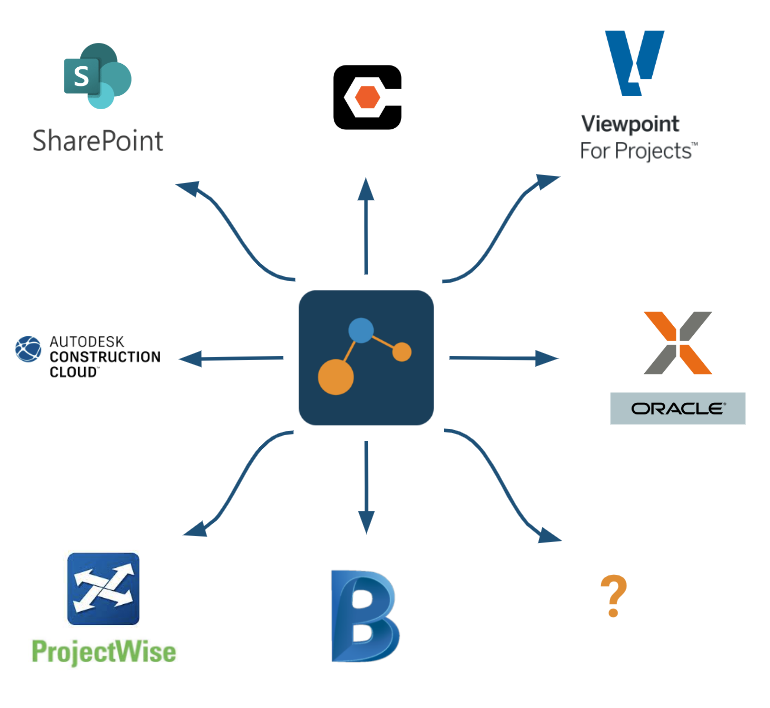Introduction
The digitisation of the construction industry has been accelerated by the unprecedented challenges posed by the Covid-19 pandemic. As organisations were forced to work digitally and collaborate through project management platforms, the immense efficiency benefits offered by "best of breed" software solutions became evident. In an industry known for its competitiveness, it is crucial for organisations to explore alternative software vendor solutions that can better address their evolving needs and deliver enhanced value.
Changing Strategies and Unfulfilled Promises
One of the key reasons to consider switching to an alternative CDE solution is when the current vendor fails to meet expectations. Whether the vendor has changed their strategy or is not delivering on the promised feature set, such shortcomings can cost your company valuable time and money. By exploring other options, you open up the possibility of finding solutions that align more closely with your organisation's requirements, both present and future.
Accelerated Innovation and Relevant Features
In today's fast-paced environment, CDE solutions are evolving rapidly, offering features that directly cater to the specific needs of organisations. It is crucial to stay up-to-date with the latest advancements and embrace solutions that are moving at a faster pace, incorporating features that hold more relevance to your organisation. This agility can provide a competitive edge and ensure your projects are delivered efficiently.
Adapting to Changing Business Strategies
As organisations evolve, their strategies and priorities change. This may require a different set of features and functionalities from the CDE solution commonly used within your organisation. When your current software no longer aligns with your business objectives, considering alternative solutions becomes imperative. By embracing a software platform that caters to your evolving needs, you can streamline processes and enhance productivity.
Protecting Project Portfolio Data
Maintaining access to project portfolio data is of utmost importance when transitioning between CDE solutions. By not renewing licences or subscriptions, you risk losing access to valuable data that you have a duty to retain access to. To safeguard your historical portfolio, it is recommended to migrate your data to the new CDE solution. Fortunately, off-the-shelf proven solutions exist that enable efficient and cost-effective data migration, preserving your valuable information.
Streamlined Migration Processes
Traditionally, migrating between CDE solutions was a complex and time-consuming task that required custom development and dedication of a large amount of resources from within your organisation. However, modern integration solutions offer out of the box integrations that can be configured that simplify the migration process. Expert migration teams are readily available to handle the entire process from start to finish, saving time and reducing the burden on internal resources.
Seamless Integration and Cost Savings
In the past, transitioning to a new CDE solution meant starting from scratch with new projects, leaving old project data behind or archived on a hard drive. However, today's off-the-shelf integration solutions can seamlessly connect your old CDE to the new CDE, ensuring a smooth transfer of information. This process is comparably inexpensive and allows your teams to pick up where they left off, reducing the overall cost and change management required.
Increased Platform Exploration and Bargaining Power
The accessibility of trial periods for different platforms allows organisations to explore multiple options and identify the best solution for their specific needs. By leveraging integrations, it provides an opportunity to test CDE solutions with your own project data. This means that you can increase your bargaining power and negotiate the best terms with software vendors, ensuring a solution that aligns perfectly with your organisation's requirements.
Flexibility in Migration Approaches
Different migration approaches offer organisations the flexibility to transition gradually. For instance, you can choose to complete live project workflows on the current CDE solution while keeping published documents up to date on the new CDE. This enables your site teams to benefit from the advantages of the new CDE while maintaining existing processes in the current CDE.
Conclusion
The construction industry has experienced significant digitization and transformation, and now is the opportune moment to consider alternative software vendor solutions for project management. As the industry becomes increasingly competitive, staying ahead of the curve requires software platforms that are agile, feature-rich, and aligned with your organisation's evolving needs. With the maturity of migration processes and the availability of expert migration teams, transitioning to a new platform has never been easier or more cost-effective. Embrace change, explore alternatives, and seize the opportunity to enhance your organisation's competitiveness in the construction industry.


